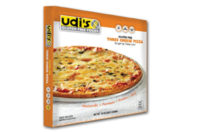More of Less

Food allergies have been widely in the news of late, and recent weeks have seen a spurt of media coverage in the wake of the death of a seven-year-old Virginia girl, who died of cardiac arrest and anaphylaxis after consuming a peanut. Food allergies have no cure and are only treated through such means as antihistamines (for mild reactions) or even epinephrine injections (for severe reactions).
The number of food allergy sufferers appears to be rising. According to the Centers for Disease Control and Prevention, the number of children with food allergies jumped 18% between 1997-2007, and researchers at Northwestern University's Feinberg School of Medicine in Chicago found 8% of U.S. children under the age of 18 have at least one food allergy. For that matter, research out of Canada suggests well-educated consumers from smaller families are nearly twice as likely to face dangerous food allergies.
In the study published in the January 2012 Journal of Allergy, McGill University researchers hypothesized that the increase results from cleaner homes, less exposure to pets and livestock, and an increased reliance upon antibiotics as possible causes for the statistics, which inquired of 3,613 households between March 2008 and May 2009 about their nut, shellfish and fish allergies. Post-secondary graduates, researchers found, were almost twice as likely to have tree nut allergies compared to others; immigrants were half as likely to have any allergies at all.
In the U.S., one in 133 people have the autoimmune digestive condition Celiac Disease, as do one in every 100 U.K. consumers; however, the U.K. has introduced new restrictions on labels proclaiming “Suitable for Celiacs.” As of January 1, the new law, covering all foods on sale (whether in restaurants, supermarkets or at deli counters), indicates a gluten-content claim has to fall into one of two levels:
- Gluten-free – no more than 20ppm (previously, there had been no set legal limit for “gluten free”)
- Very Low Gluten – no more than 100ppm and must contain ingredients specially processed to reduce their gluten content.
The “Suitable for Celiacs” phrase can only be used alongside one of these descriptors and may not be used on its own. “No gluten-containing ingredients” may be used where gluten has not been intentionally added, but the phrase is not controlled by law.
While the U.S. has no defined gluten label rules (they remain in debate among regulators), it does have a robust gluten-free market; the USDA estimates gluten-free products fetched $1.7 billion in sales in 2010. As Dr. Lucy Gibney, founder of Dr. Lucy’s, probably best-known for its line of cookies found at a number of Starbucks around the country, states, “The question is no longer if a store will get in on gluten-free; it’s how they will.” Sam Mills USA, the U.S. distributor of Sam Mills products, is introducing U.S. consumers to several of its gluten-free pastas found in Europe. Included in the line are penne, fusilli and fettuccine, as well as others, all free from gluten, wheat, dairy, eggs, sugar, cholesterol, yeast, soy, sodium and nuts. The company also has launched gluten-free sauces, with recipes including Olive Zingara Style, Tomato & Basil, Tuna and Olives, Tomato & Vegetable, and Rocotta Cheese & Vodka.
Another major player in the U.S. gluten-free arena, Enjoy Life Foods has added a Crunchy Vanilla Honey Graham Cookie, as well as the company’s first foray into granola, with Double Chocolate Crunch, Cinnamon Crunch, Very Berry Crunch and Cranapple Crunch, each of which may be eaten with rice milk or straight out of the bag. For bakers, Enjoy Life has added Semi-sweet Chocolate Mega Chunks, and all of the company’s products are free of wheat, peanuts, eggs, fish, dairy, tree nuts, soy, shellfish, casein, potatoes, sesame and sulfites.
While obviously not for nut-free consumers, Peanut Butter & Co.’s Squeeze Packs are available in three flavors – Smooth Operator (a natural peanut butter), The Bee’s Knees (peanut butter blended with honey) and Dark Chocolate Dreams (peanut butter blended with dark chocolate). Soy has emerged as an allergen to watch, and in the case of Peanut Butter & Co.’s Dark Chocolate Dreams, the label describes the lecithin as derived from sunflowers.
For so many Celiac sufferers, however, the food item often cited as most-missed is bread. However, Udi’s Gluten Free Foods has added a range of gluten-free muffins, breads and pizza crusts, and it recently introduced hot dog and hamburger buns, also free of dairy and soy, as are the other products in the line. Though the products do contain eggs, the rest of the ingredient legend is free of gluten and includes such ingredients as tapioca starch, brown rice flour, resistant corn starch, potato flour, yeast, xanthan gum and guar gum.
From the January 23, 2012, Prepared Foods’ E-dition
Looking for a reprint of this article?
From high-res PDFs to custom plaques, order your copy today!




